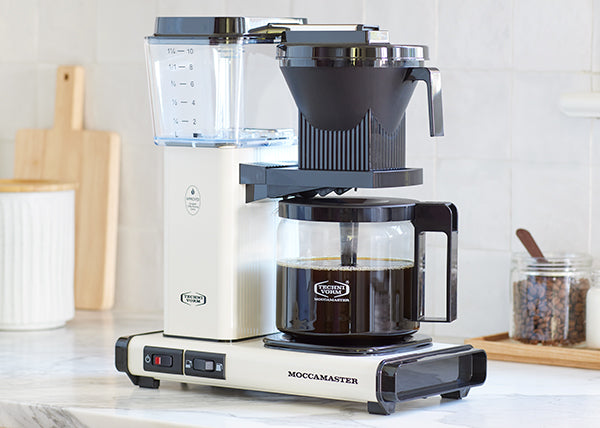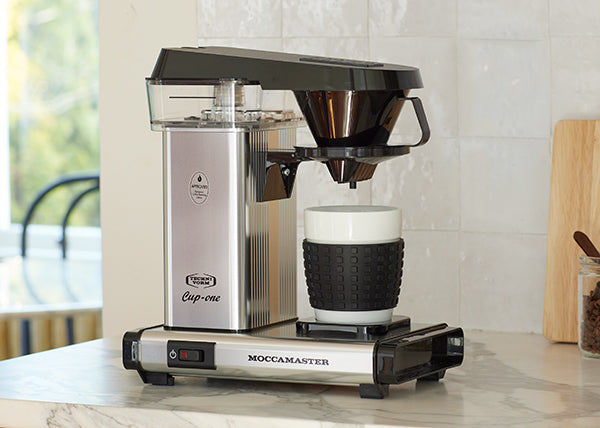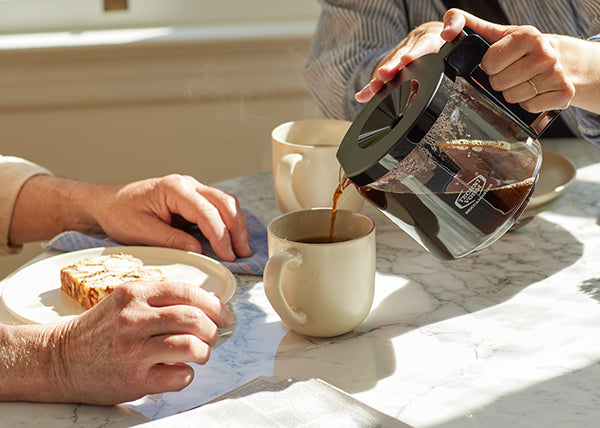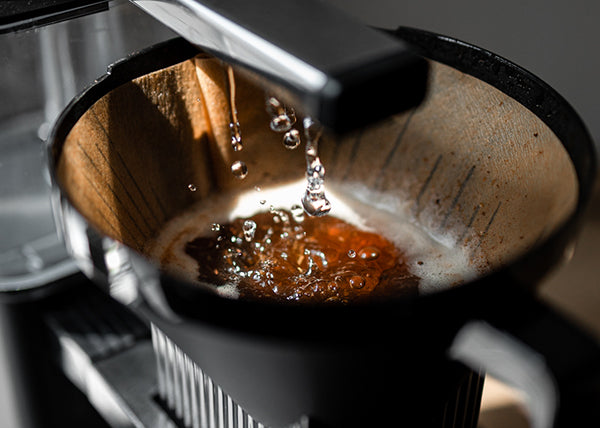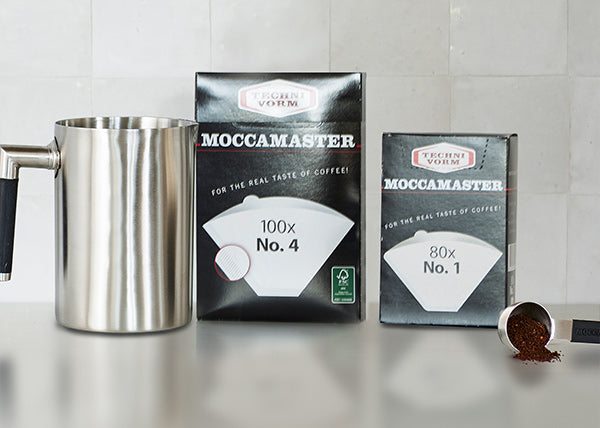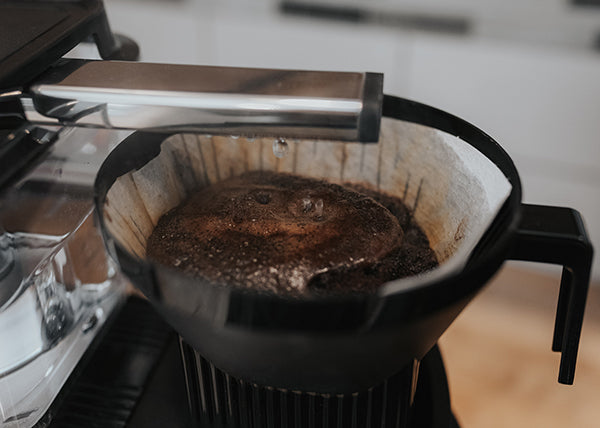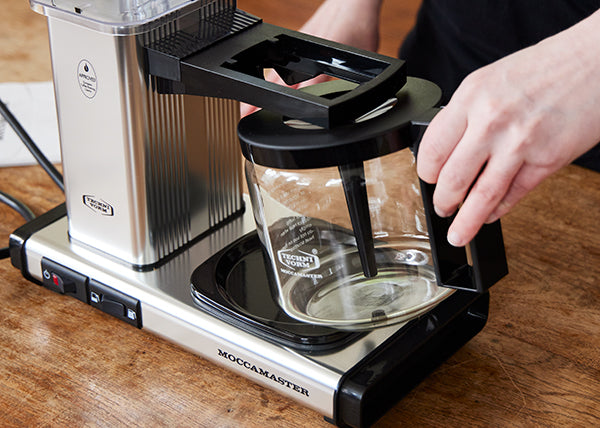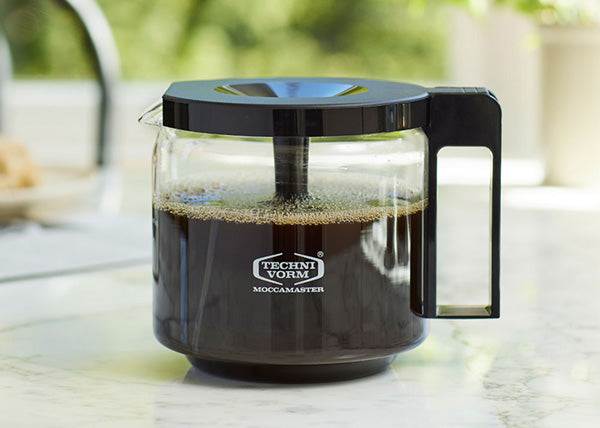
The
Specialty Coffee Association (SCA) is a nonprofit trade association that champions coffee excellence and establishes industry benchmarks for coffee brewing and quality. Their
Certified Home Brewer Program, developed by coffee scientists and professional coffee tasters, identifies machines that meet these exacting standards. Each brewer undergoes tests evaluating brewing time, water temperature, and, crucially, their adherence to the SCA’s Golden Cup standard of 18%-22% total dissolved solids (TDS). TDS gauges the extraction of coffee solubles, influencing the taste intensity of your brew—essentially, it determines how ‘coffee-rich’ your cup is.
Moccamaster coffee brewers were among the first recognized under the SCA’s Certified Home Brewer program, and we're honored to uphold this certification today. In fact, every Moccamaster model adheres to the SCA's stringent brewing standards.
To secure this badge of quality, each coffee brewer faces meticulous SCA tests. But what do these tests entail? Let's delve into the specific criteria and the rigorous process behind this certification.
1. Coffee Volume
A brewer's basket size is crucial: it should align with the volume of coffee the machine produces and must account for the natural expansion or "bloom" of the coffee grounds, ensuring no overflow occurs. Maintaining a coffee bed depth of 1-2 inches (2.5-5.0 cm) in the brew basket is recommended for optimal flavor extraction. This depth ensures even water distribution and maximum contact, which is vital for drawing out the best flavors from the beans.
2. Brewing Time
For optimal taste, it's imperative that, at full capacity, the brewer maintains water contact with the coffee grounds between 4 to 8 minutes. Falling outside this window can compromise flavor: less time risks under-extraction, while anything beyond 8 minutes tends toward over-extraction. In fact, a brewing time of over 8 minutes is an immediate disqualification.
3. Brewing Temperature
The temperature at which the water contacts the coffee grounds is crucial. For the best flavor extraction, this range should be between 197°-205°F (92°-96°C). The SCA employs specialized instruments and techniques for accurate temperature readings to ensure precision.
4. Beverage Preparation
To gauge the ideal strength and flavor of brewed coffee, the SCA assesses the amount of total dissolved solids (TDS) present. This is the measurement of coffee solubles extracted from the grounds and is directly responsible for the the resulting taste. Coffee makers undergo testing at both their maximum capacity and a reduced volume to ensure consistent quality regardless of batch size. The optimal TDS extraction range is between 18.0% and 22.0% of the coffee's weight, ensuring a balanced and flavorful brew.
5. Uniformity of Performance
To ensure that every coffee brewer model performs consistently, the SCA tests up to ten units of the same model. Each brewer undergoes a series of ten brew cycles, and the extraction from each batch is meticulously measured. Using a coffee refractometer, the SCA gauges the strength of the brew. Furthermore, the Coffee Brewing Control Chart aids in calculating the exact amount of coffee solubles transferred from the grounds to the brew. The ultimate goal is uniformity across all tests and units, guaranteeing a consistent brewing experience for the end user.
6. Uniformity of Extraction
The SCA tests how evenly a coffee maker can extract flavor from coffee grounds. The SCA quantifies this uniformity with a rating out of 100, where a higher score signifies a more even extraction. This rating is calculated by comparing the distribution of soluble coffee compounds in different sections – the outside, middle, and inside – of the wet coffee grounds in the brew basket. Brewers that fall below a score of 60 don't align with the SCA’s stringent benchmarks and would require modifications for future certification.
7. Beverage Clarity
No one enjoys a gritty cup of coffee. Recognizing this, the SCA evaluates the clarity of the brew by measuring the amount of sediment it contains. Using a meticulous filtering and weighing process, they determine the sediment content. To earn the SCA’s seal of approval, a coffee maker must consistently produce brews with a remarkably low sediment level, less than 75 milligrams for every 100 milliliters of coffee.
8. Holding Receptacle and Temperature
After brewing, coffee must remain at the optimal holding temperature. The SCA ensures that the brewer's carafe is appropriately sized for its designated machine and can maintain the coffee's warmth. Specifically, the brew must stay within the range of 176 °-185°F (80°-85°C) for at least 30 minutes post-brew. While retaining this warmth, the machine must never actively reheat the brew, ensuring the coffee's nuanced flavors remain intact.
In the home coffee brewing landscape, certification from the Specialty Coffee Association is a testament to unparalleled quality and brewing precision. As of October 2023, only 24 coffee brewers are certified by the SCA. It’s impressive to note that all eight current Moccamaster models are on this list, underscoring our commitment to excellence and emphasizing our position as an industry leader. For anyone prioritizing quality in their daily brew, choosing a Moccamaster is akin to choosing the gold standard in home coffee brewing.
 The Specialty Coffee Association (SCA) is a nonprofit trade association that champions coffee excellence and establishes industry benchmarks for coffee brewing and quality. Their Certified Home Brewer Program, developed by coffee scientists and professional coffee tasters, identifies machines that meet these exacting standards. Each brewer undergoes tests evaluating brewing time, water temperature, and, crucially, their adherence to the SCA’s Golden Cup standard of 18%-22% total dissolved solids (TDS). TDS gauges the extraction of coffee solubles, influencing the taste intensity of your brew—essentially, it determines how ‘coffee-rich’ your cup is.
The Specialty Coffee Association (SCA) is a nonprofit trade association that champions coffee excellence and establishes industry benchmarks for coffee brewing and quality. Their Certified Home Brewer Program, developed by coffee scientists and professional coffee tasters, identifies machines that meet these exacting standards. Each brewer undergoes tests evaluating brewing time, water temperature, and, crucially, their adherence to the SCA’s Golden Cup standard of 18%-22% total dissolved solids (TDS). TDS gauges the extraction of coffee solubles, influencing the taste intensity of your brew—essentially, it determines how ‘coffee-rich’ your cup is.

